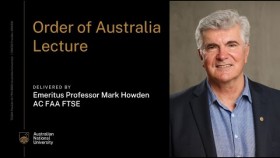ANU helping build cheaper and greener electricity networks
New smart electricity technology developed at The Australian National University (ANU) has passed a major trial in Tasmania and has proven it can now help manage the supply of renewable energy and battery storage from households to the grid.
The Network Aware Coordination (NAC) technology has been successfully trialled across 40 homes on Tasmania's Bruny Island, proving the system could be used Australia wide to both improve electricity security and to drive down energy prices.
NAC lead developer Dr Paul Scott said the NAC allowed household solar systems and household battery storage to work seamlessly with the electricity networks to help manage electricity supplies at times of peak demand.
"Our trial shows we can successfully get more solar and storage into homes, make the grid more efficient, and at the same time strengthen the reliability of the electricity grid," said Dr Scott, from the ANU Research School of Computer Science.
"It will also help bring energy prices down for consumers, particularly as more and more homes across Australia install solar energy and energy storage systems."
The NAC technology makes it easier to coordinate when renewable energy should be injected into the grid and when it should remain stored in household batteries.
The NAC ensures household energy data is kept private while helping negotiate the best price for the power when it is fed into the electricity grid. It will help networks improve operations at normal times, reduce stress during times of peak demand, and remove the need for costly network upgrades over the long term.
Project leader Professor Sylvie Thiébaux from the ANU College of Engineering and Computer Science said the new NAC technology would lead the way in distributed optimisation of clean energy and would help enable mass deployment of renewable energy.
"Through the Bruny Island trial we have demonstrated how the NAC approach can solve wider grid problems, in particular those that can arise through the mass deployment of renewables and battery storage," Professor Thiébaux said.
"This paves the way for a more intelligent way to operate our grids reliably, while collaborating with consumers to make the best use of the resources they are installing."
Dr Dan Gordon, from the ANU Research School of Engineering, said the NAC could be scaled up to cover a town, city, a state or all of Australia.
"One of the great things about NAC is that it is a distributed algorithm," he said. "Each customer's system acts in their own best interest, and privacy is retained - yet we arrive at a solution which is better for everyone.
"Each customer's system performs relatively easy calculations, which don't get harder as more customers are added. The vision is that NAC could be scaled up to a large ecosystem of residential and distributed energy providers."
The NAC tests on Bruny Island were done in collaboration with the $8 million CONSORT project, a collaboration between ANU, The University of Sydney, The University of Tasmania, electricity network TasNetworks, and Canberra-based Reposit Power.
The CONSORT project was last week named the 2018 Australian Energy Project of the Year by the Electrical Energy Society of Australia.
The Australian Government, through the Australian Renewable Energy Agency (ARENA), is providing $2.9 million towards the CONSORT project under its Research and Development Programme.










